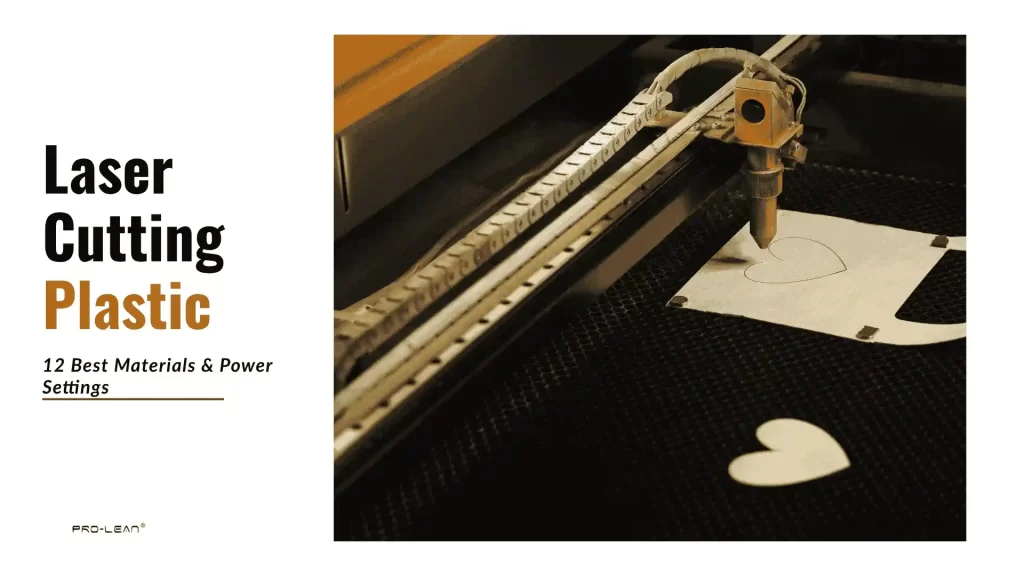
Laser Cutting Plastic
Plastics are used in nearly every industry. They are available in rods, pipes, and laser cut plastic sheets. They are affordable, lightweight, and easy to work with. But when it comes to laser cutting plastic, not all plastics act the same way. Some melt cleanly and produce sharp, polished edges. While others release harmful fumes and leave rough, uneven cuts. That’s why you must understand which plastics are safe and suitable before starting any laser-based project.
At Prolean Tech, we take a careful approach to every plastic-cutting job. Our team understands the physical-to-chemical behavior of various laser cut plastics. We select materials that give clean, accurate results without compromising quality. We utilize advanced CO₂ laser systems, which are well-suited for most laser-friendly plastics, like acrylic, ABS, and polycarbonate. Every project undergoes a comprehensive check, so your parts are precise, polished, and damage-free. Whether you need prototypes, custom parts, or production-ready components, we make sure the material and method match perfectly.
In this guide, you’ll learn how laser cutting works with plastic. We’ll cover which plastics are suitable, which ones to avoid, and the best types of laser cutters for the job.
How Laser Cutting Plastic Works?
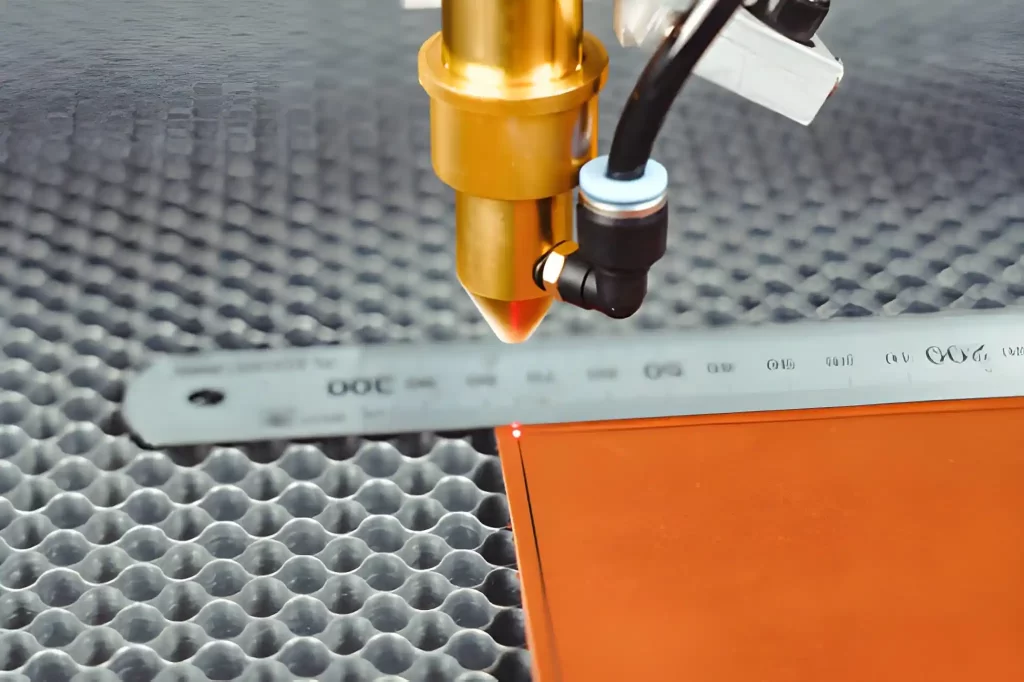
Laser Cutting Process
Laser cutting uses a focused beam of light. This slices through plastic with high precision. The heat from the laser is intense enough to melt and vaporise the material along the cutting path. There is no contact or pressure on the surface, which helps achieve uniform and clean results.
The process starts with a digital design file. Once the file is loaded into the laser cutter software, the system guides the laser across the plastic based on the exact path of the design. The beam follows every detail.
Laser cutting works well for custom work and large-scale production, especially when quality edges and tight tolerances are important.
Choosing the Right Laser Cutter for Plastic
The choice of laser cutter significantly affects how precisely and neatly you can work with plastics. Some machines are optimal for cutting and engraving. While others are good for light use or for specific types of plastics. For example:
CO2 Lasers give Full Cutting Power
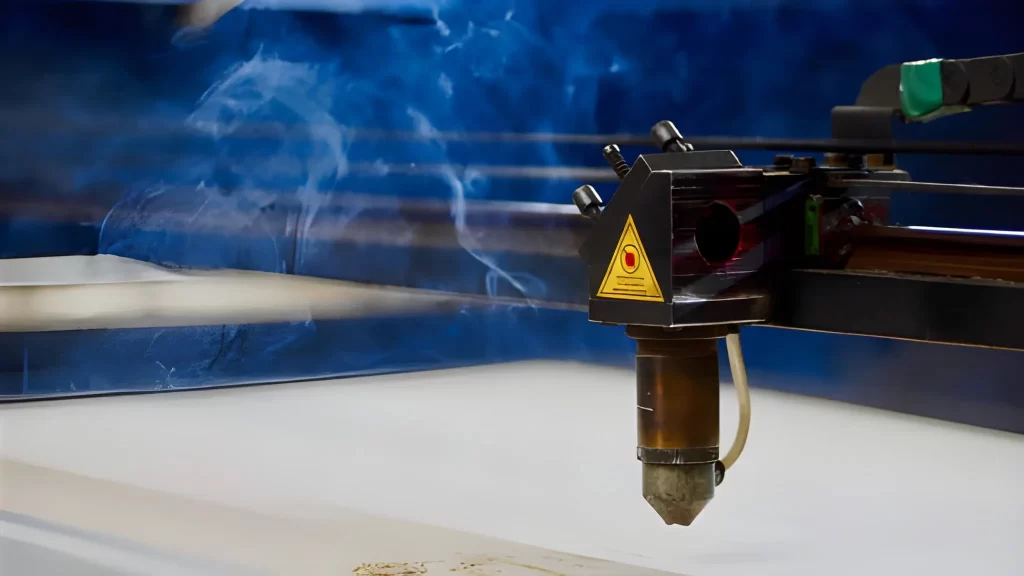
CO2 Laser Cutter
CO2 lasers are the most commonly used type today. The CO₂ laser works well with most plastics. It produces smooth, clean, and sharp cutting edges. These are noted for their dependability and accuracy, even in thicker sheets. For optimal performance, it is advisable to use at least 40-watt CO2 lasers that have sufficient energy to readily penetrate or cut through plastics.
Diode Lasers are for Basic Work
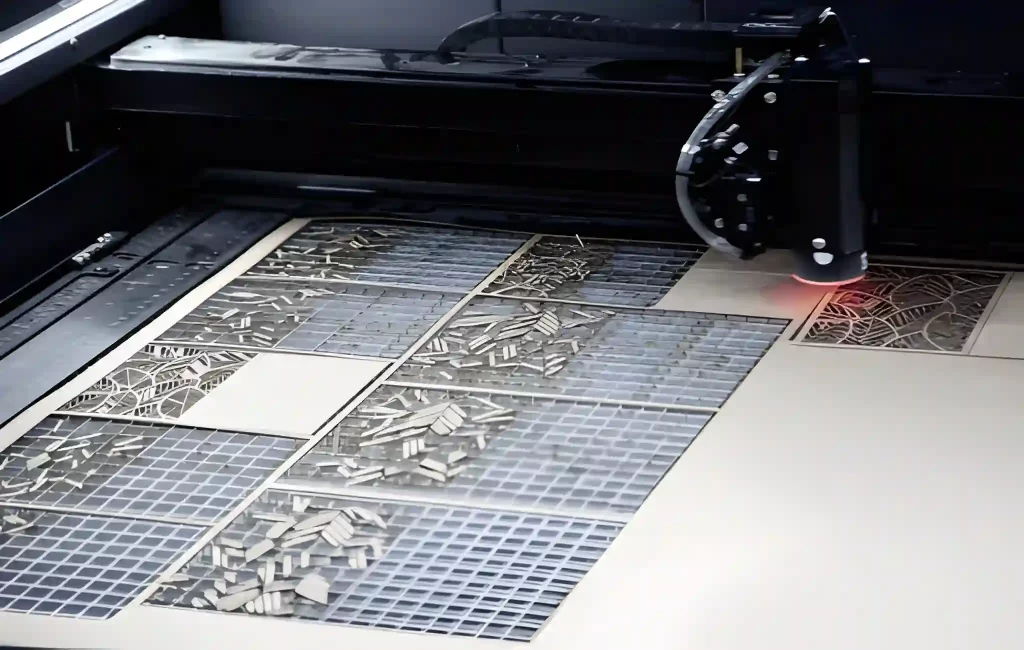
Diode Laser Cutter
The diode lasers give an economical starting place for laser techniques. They use differing wavelengths, which provide them with utility only with dark or opaque glass materials. Transparent glasses will not efficiently absorb the laser beam of the diode, and cutting will not be allowed. However, due to their ease of operation, they will undoubtedly serve well for engraving or thin glass, as their primary purpose.
Infra-red Lasers for Fine Engraving Type Work
Lastly, infrared lasers are useful for engraving jobs. These lasers operate at wavelengths that enable the creation of detailed surfaces on specific types of plastics. These are not usually used for the cutting process, but rather for accurately producing delicate and detailed surfaces. These are excellent recommendations for that quality of work where engraving surfaces are of prime consideration.
Try Prolean Now!
What are the Best Plastics for Laser Cutting
Choosing the right plastic for your project is critical because not all plastics can be treated the same way when laser-cut. Some provide clean, sharp edges, while others may melt and warp if attention is not taken. Here are some common plastics suitable for laser cutting, along with some key considerations.
Acrylic
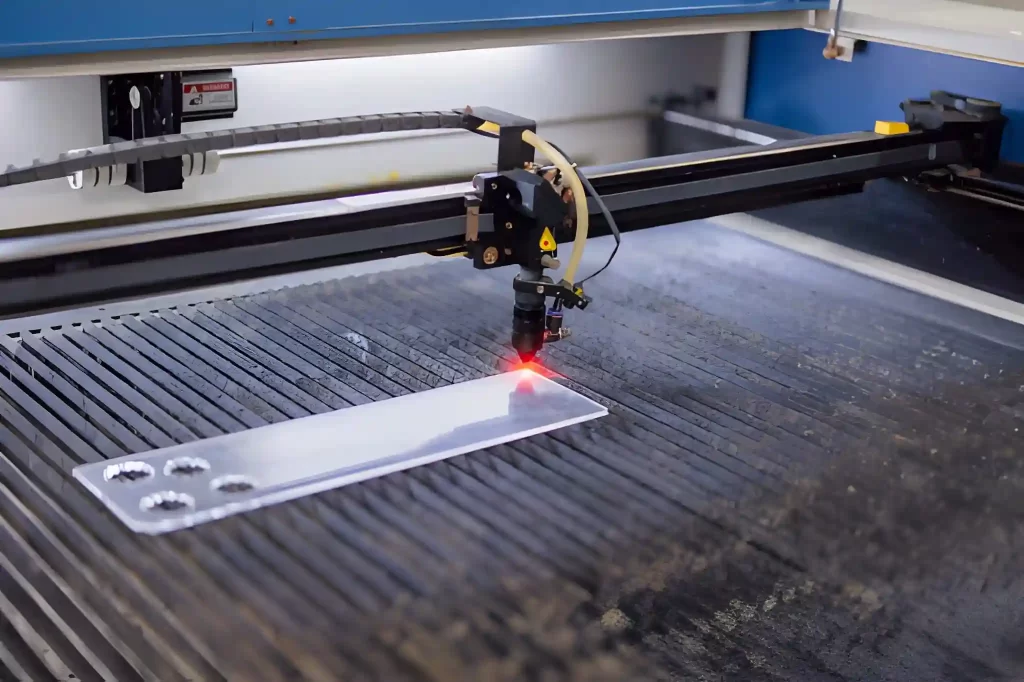
Acrylic Laser Cutting
Acrylic is among the easiest plastics to work with using a laser. It is clear, strong, and cuts very well. When acrylic is cut with a CO2 laser, it usually leaves gleaming, smooth edges as if the machine has polished them.
It is optimally used for signs, display cases, or even furniture. Be cautious with the settings to prevent small flames from being produced when cutting. (See more: laser cutting acrylic)
Nylon
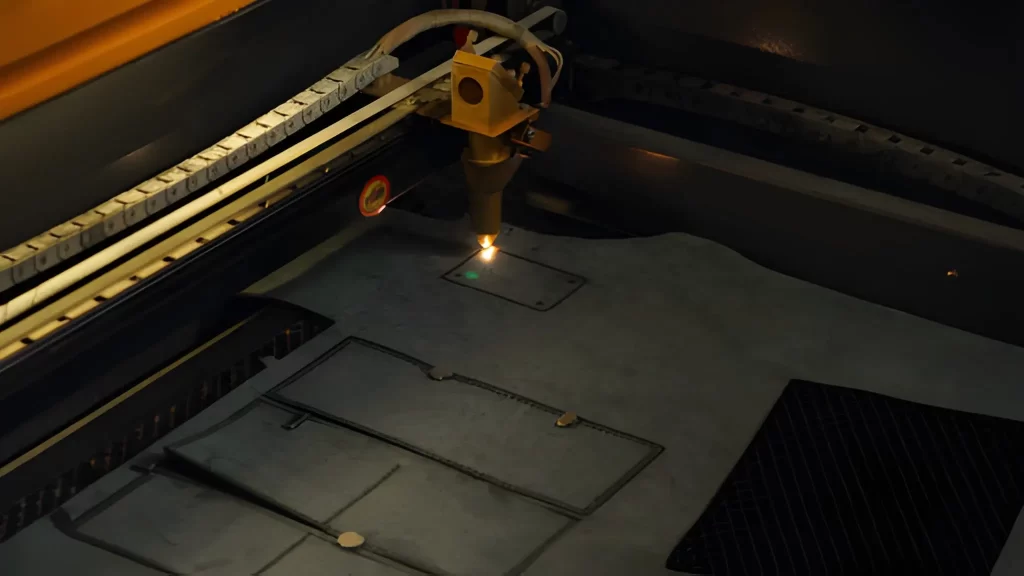
Laser Cutting Reinforced Nylon Sheet
Nylon plastic is a highly strong and tough laser cutting plastic that is usually found in fabric form, such as in raincoats and sports clothing fabrics. It is also used in solid form and is suitable for laser cutting.
When fabrics are cut with a laser, the edges are slightly melted and sealed, preventing them from fraying. This means it can also cut cleanly through fabrics or thin sheets. (Also Read: laser cutting nylon)
HDPE
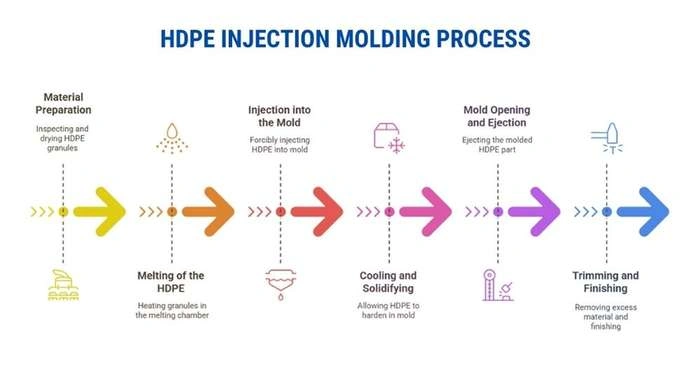
HDPE Injection Molding Process
HDPE is also a strong, lightweight laser cutting plastic. It is useful for a wide range of applications, from bottles to pipes. It can also be cut reasonably well with a laser due to the neat melting pile produced by the laser hitting the object.
However, it has a low melting point. So if you are using too much power or working very closely to the same spot repeatedly, the edges are liable to get uneven, or possibly even warp. Therefore, it requires considerable care when cutting.
Kapton Tape
Kapton tape is a fragile, heat-resistant, laserable plastic. It is widely used in the electronics field. It withstands high temperatures without melting or losing its other properties. When laser-cut, the beam burns a perfect hole in it, leaving only a small area affected by the heat. This makes it ideal for fine, delicate cutting jobs and is primarily used for cutting the leads of electrical components, among other applications.
Styrene
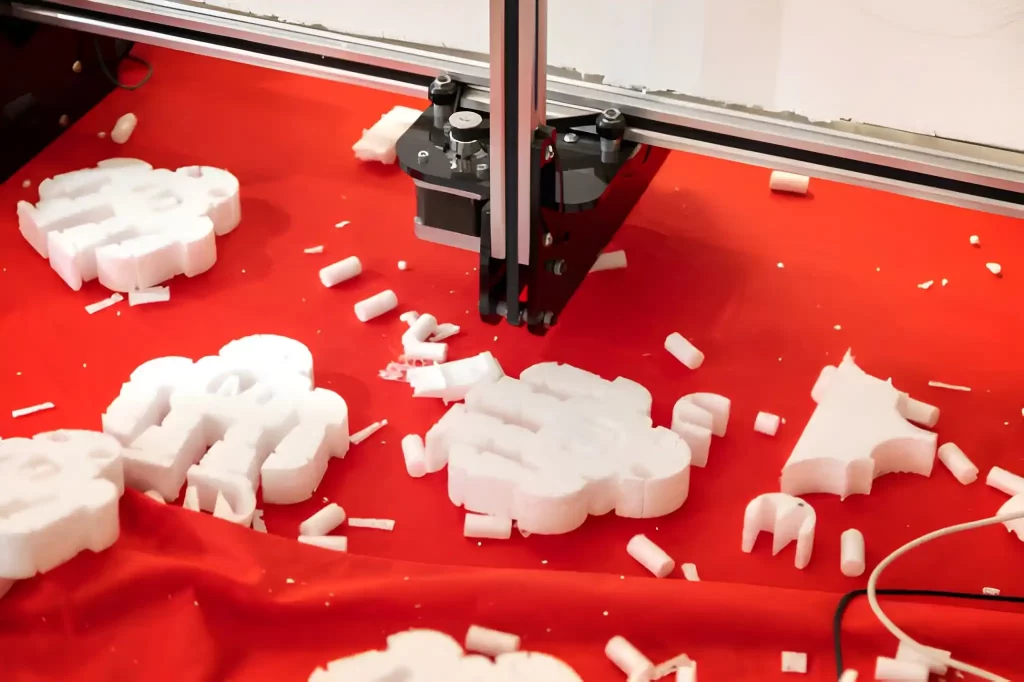
Polystyrene Cutter Plotter
Styrene is an affordable plastic of considerable use in model kits. It is highly brittle compared to other substances, but can be easily cut with a laser. Due to its low melting point, it does not permit very close lines or small details to be cut, as the edges may become softened or warped. It gives the best results when cutting simple shapes and making larger cuts.
Polypropylene
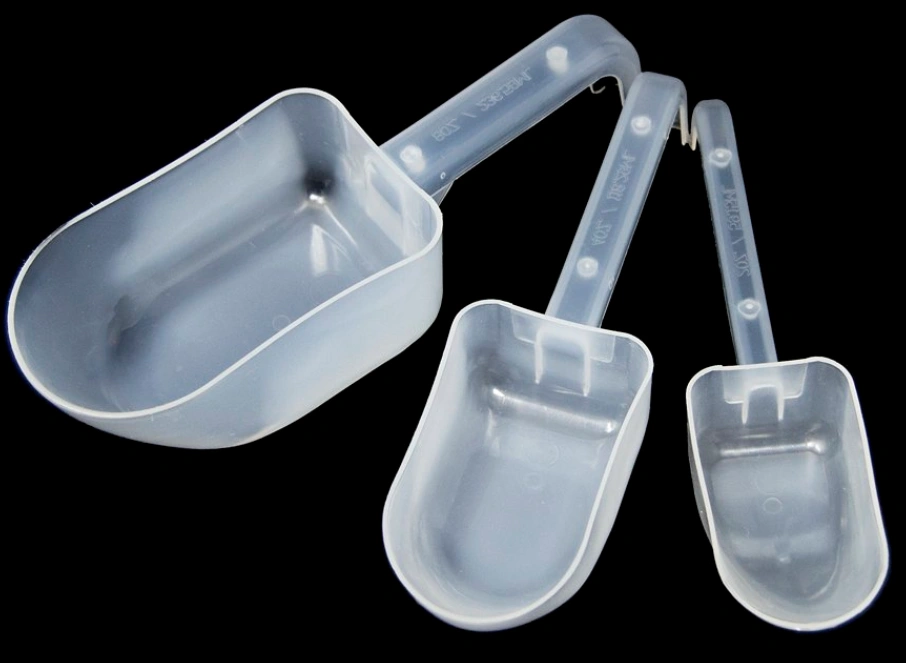
polypropylene translucent scoops
Polypropylene, or PP, is a rigid laser cutting plastic. It has high resistance to the effects of heat and chemicals. It is inflexible and can withstand blows well, making it popular for use in both industrial and home settings, as well as in the manufacture of food container articles and for packaging purposes.
It produces an excellent, clean edge with no burning or darkening in laser cutting. You may notice a slightly raised edge or burr at some points on the cut, but overall, you have a clean and good finish. Laser cutting polycarbonate is another option that typically gives cleaner cuts.
Polyethylene
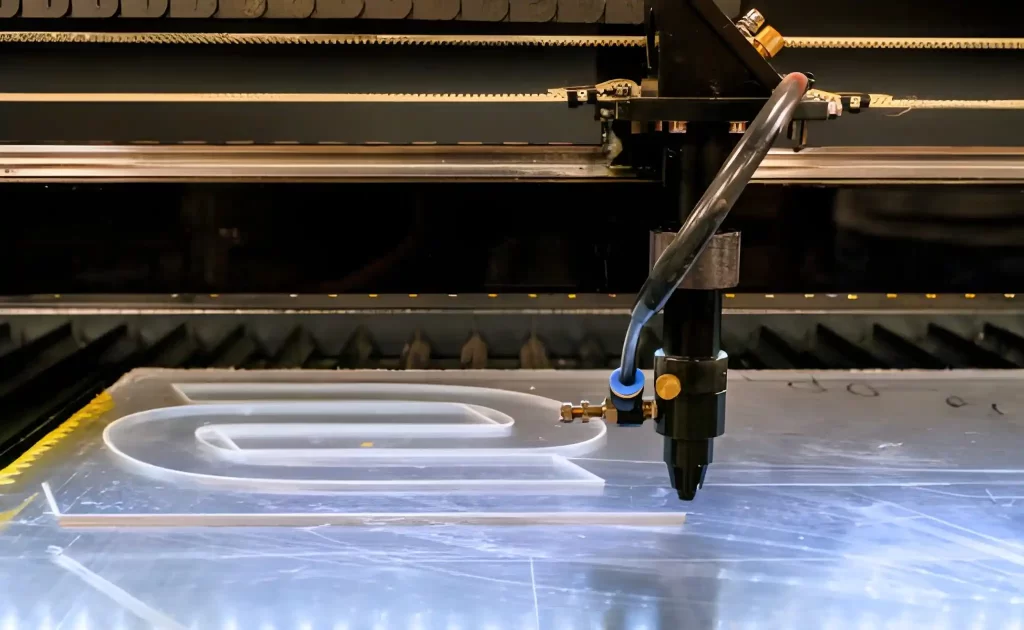
Polyethylene Laser Cutting
Polyethylene is amongst the world’s most widely produced plastics and is readily available in several different forms. High-density polyethylene is rugged and strong, while some of the softer and more flexible forms, such as linear low-density polyethylene, are more flexible and can be easily bent.
Polyethylene is widely used in packaging operations for items such as food wraps and bags. In the case of laser cutting polyethylene, these materials will be cut satisfactorily as they will remelt under the cutting beam. The only disadvantage here is that you may notice minor discoloration as a result of the beam, and the cut line will be slightly wider, depending on the type of polyethylene used.
ABS Plastic
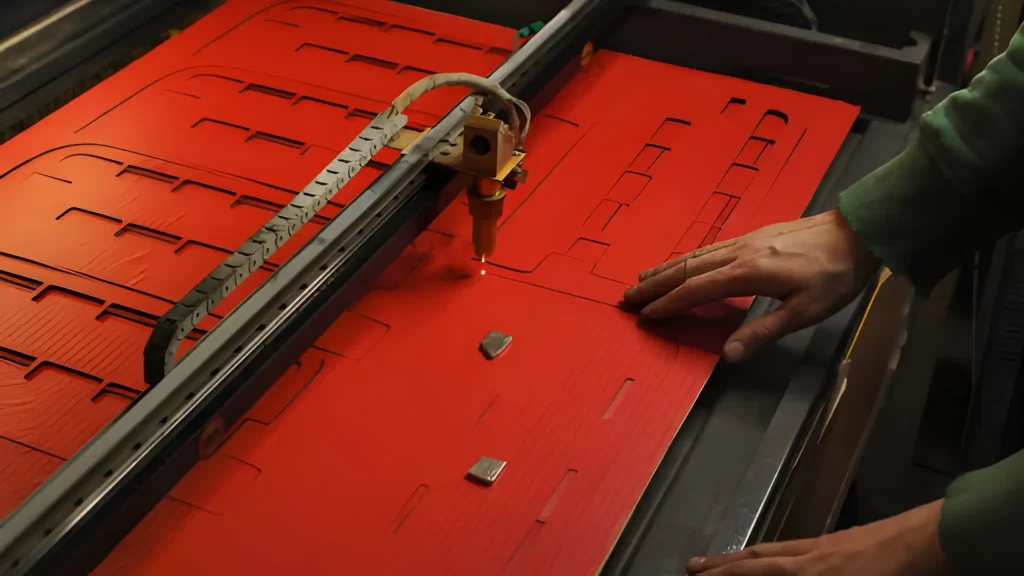
ABS Plastic Laser Cutting
ABS is an engineering laser cutting plastic material characterized by its excellent strength and durability. It is made of three different polymers before being acted upon. It finds applications in various products, including typewriter keys, automotive parts, and housings for all types of equipment.
It is rather challenging to laser cut in sections, as it generates hazardous fumes during the heating process. Therefore, it is essential to have ample ventilation and extraction facilities when working with ABS. You can achieve polished edges, but they generate heat and may cause the material to bend. This makes it hard to cut small or detailed parts.
Two Tone Acrylic
Two-tone acrylic is similar to standard acrylic except that it is laminated together in two different colours. This gives it an attractive appearance. By laser cutting or engraving two-tone acrylic, it is possible to remove the top layer and expose the color underneath. It is used for creating remarkable signs, nameplates, and other promotional materials.
When cutting two-tone acrylic, there is no significant difference between this operation and cutting regular acrylic on the machine, as the results obtained yield clean and polished edges.
Mylar
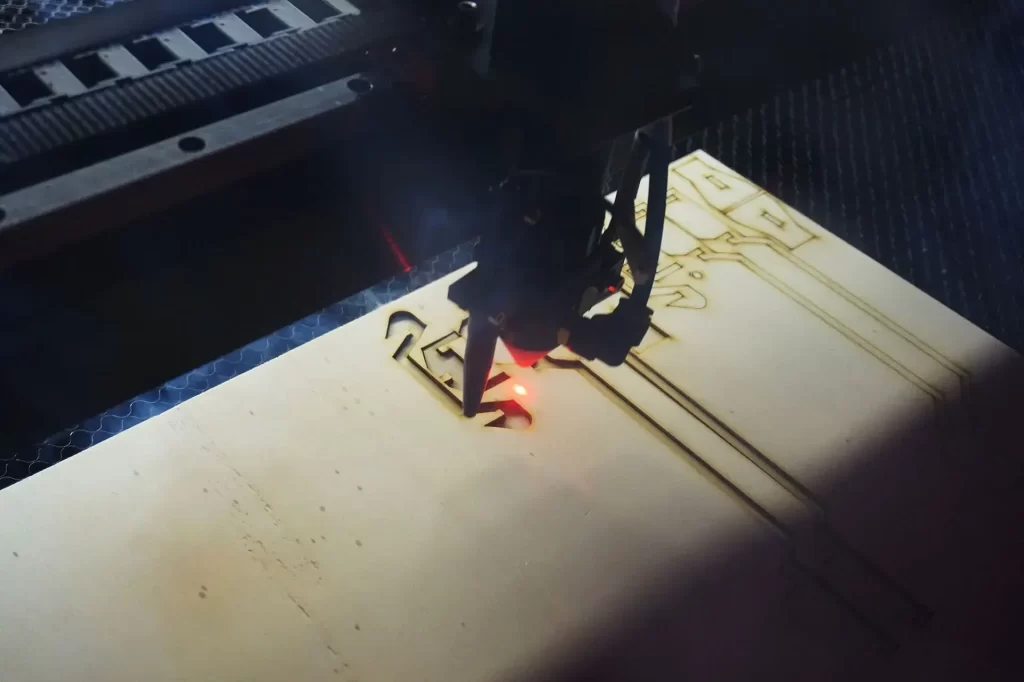
Mylar Laser Cutting
Mylar is a thin polyester film. It exhibits properties like flexibility, durability, and resistance to moisture and chemicals. It is used for packaging foodstuffs and is the standard material for stencil making. Laser cutting with 200–250 micron mylar sheets gives clean cuts with a slight edge burr. It is ideal for detailed sections, stencil work, or any work that requires clean, sharp outlines and a clean cut finish. (Also See: laser cutting peek)
Try Prolean Now!
Expert Guidelines for Laser Cutting Plastics
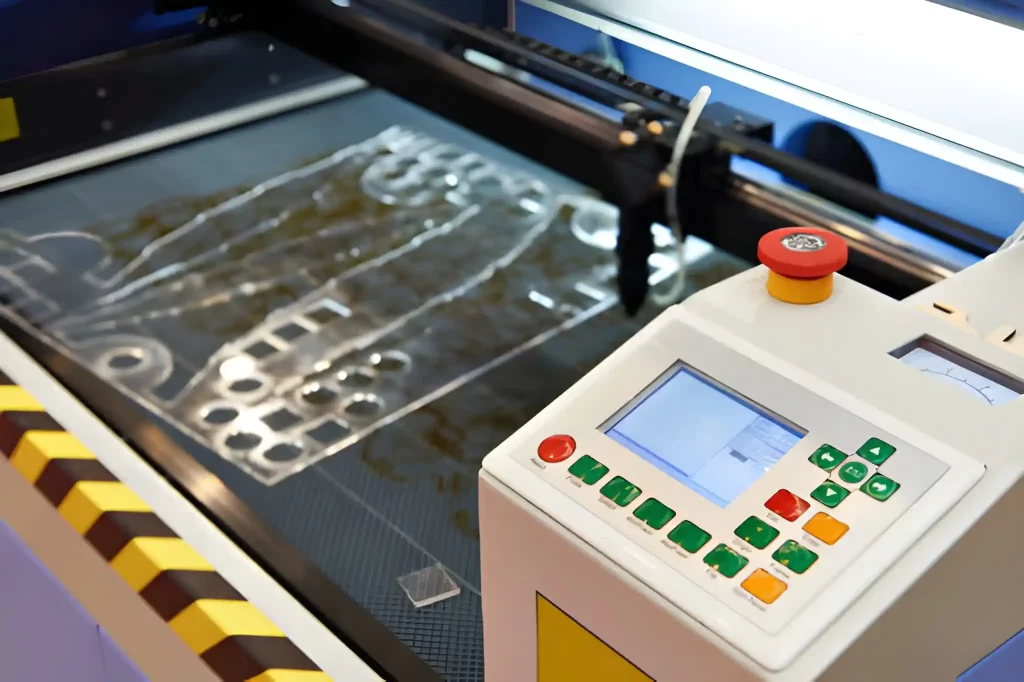
Laser Cutter Machine with Control Panel
Laser cutting plastics works best when you follow specific rules to ensure clean cuts and safe operation. Here are the key points to keep in mind:
- Use a CO2 laser for cutting plastics. Wavelengths around 9.3 or 10.6 microns are ideal. It won’t affect the cut quality.
- Avoid fiber lasers for cutting plastics. Most plastics do not absorb the 1.06 micron wavelength well. Therefore, fiber lasers are right-suited for engraving rather than cutting.
- Choose a medium to high-powered CO2 laser. This provides you with enough energy to cut through plastic cleanly without causing excessive melting or burning.
- Use higher cutting speeds and try to cut in a single pass. This approach typically gives cleaner edges and minimizes heat damage.
- High-frequency laser pulses tend to create smoother, more polished edges.
- Make sure the plastic is not easily flammable. It should not catch fire during cutting and produce hazardous fumes when melted or vaporised.
- Avoid plastics that release toxic gases when cut. Safety is crucial, so only use plastics with safe degradation products for laser cutting.
How Can You Choose the Right Plastic for Your Laser Cutting Project
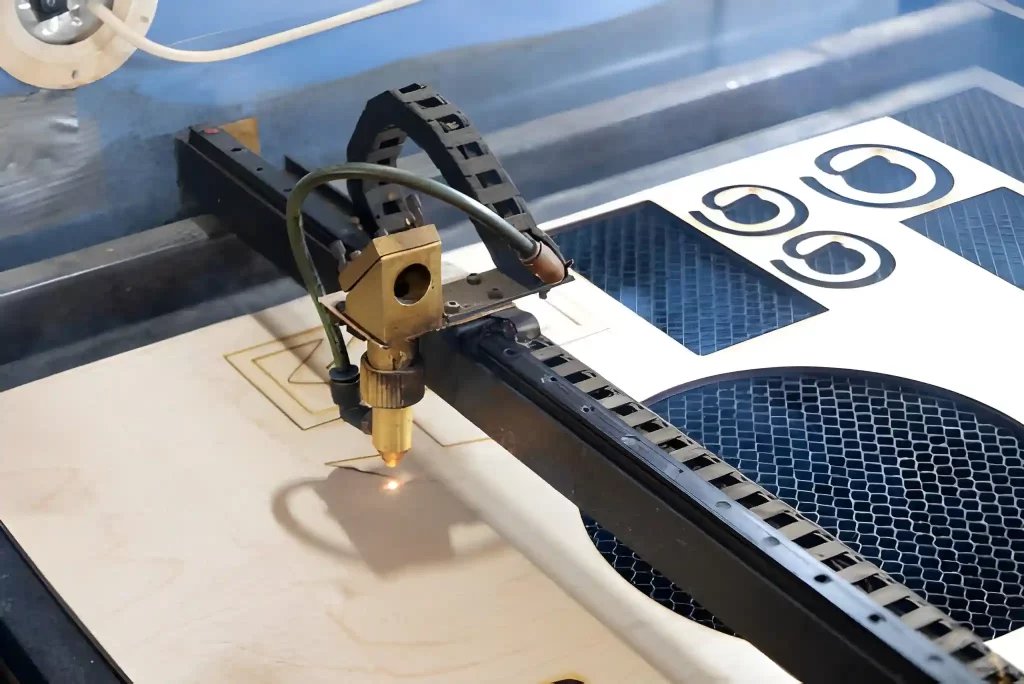
Plywood Laser Cutting
Choosing the right plastic can feel challenging job. Today, you have various options available. So, to simplify your decision, here we provide a simple approach:
- Start by listing the key physical properties your final product must possess. Consider whether the plastic should be transparent or opaque, colored or clear, flexible or rigid. Also, consider if it needs to withstand heat or handle heavy-duty use with high impact resistance.
- Next, check which plastics are readily available to you and fit within your budget. There is no point selecting an expensive material that’s hard to source.
- Finally, think about what happens after the laser cutting. If cutting is the primary step, focus on plastics that cut cleanly and give good edge quality. However, if your project involves additional processes such as machining, bonding, or painting, select a plastic that is compatible with these as well.
Final Thoughts!
This article highlighted the best plastics for laser cutting. It explains their properties and typical applications. To learn more about plastic laser cutting, please contact the experts at Prolean.
Prolean offers a wide range of manufacturing services, including precise plastic laser cutting services and other value-added solutions to support both prototyping and production needs. Visit our website to learn more or request a complimentary, free online quote.
FAQ’s
Q1. How thick can plastic be for laser cutting?
The thickness that can be cut depends on both the type of plastic and the laser’s power. For instance, a CO2 laser like the xTool P2 can handle cutting acrylic up to approximately 20 millimeters thick in one pass.
Q2. Is a fiber laser suitable for cutting plastic?
Fiber lasers are great for engraving plastic surfaces, but are not the best choice for cutting. They don’t work as effectively as CO2 lasers when it comes to slicing through most plastics.

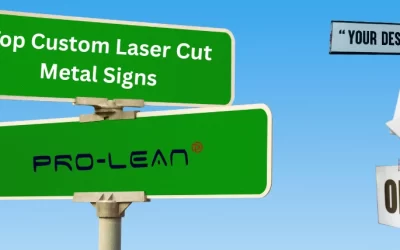
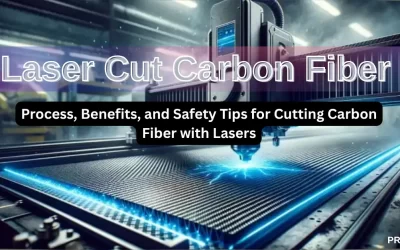
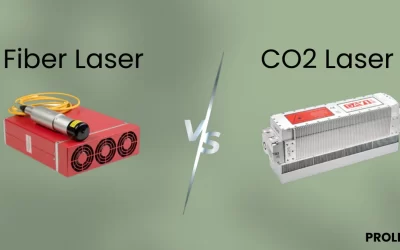
0 Comments